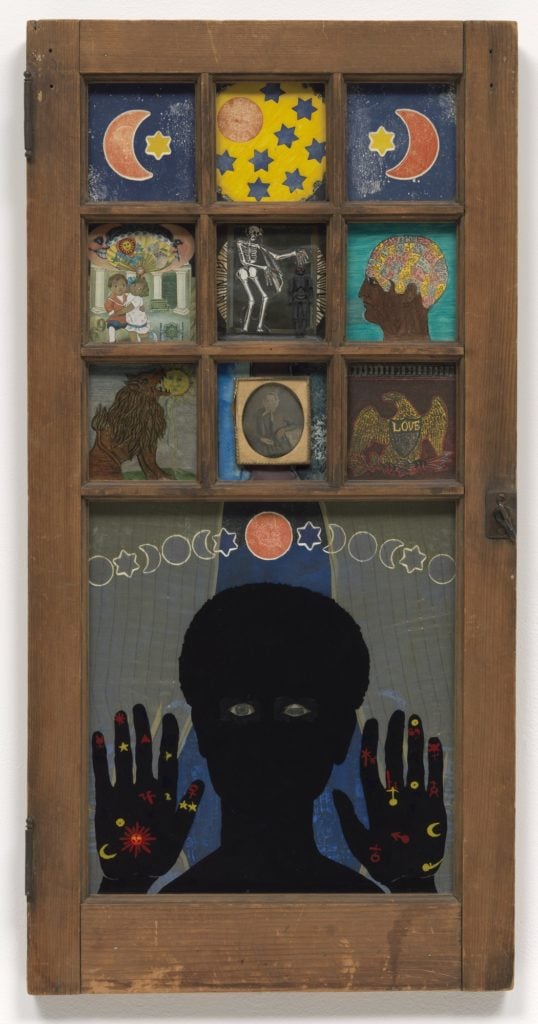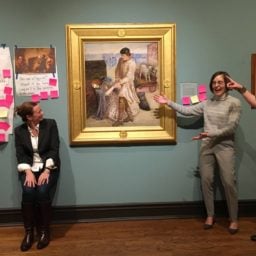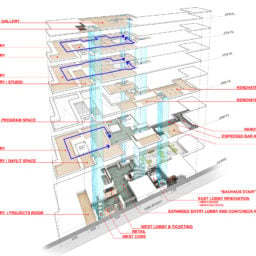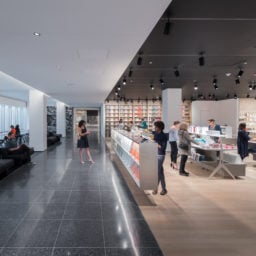The Museum of Modern Art’s massive expansion in New York will soon be complete, giving visitors the chance to see more of its collection of Modern and contemporary art than ever before. Three years ago, before the construction began that temporarily closed about 45 percent of museum galleries, approximately 1,500 works from the collection were on view. Come October 21, when the new MoMA is unveiled, there will be between 2,400 and 2,500 works showcased in the galleries.
“The core goal was really straightforward: to celebrate the breadth and complexity of our collection, so the first several months that we’re open, virtually everything on display will be from our collection,” said museum director Glenn D. Lowry at an event unveiling the museum’s plans. “If this project does one thing, it is to collapse the distance between what’s on display, which many have come to know, and what we have built that is in our reserves, which very few people know.”
But before visitors can enjoy this new access to MoMA’s collection, the museum will shut its doors beginning June 15. The closure will allow curators to undertake a complete rehang that takes advantage of the 40,000 square feet in additional exhibition space. The expansion, led by architects Diller Scofidio + Renfro in collaboration with Gensler, takes over the lot once occupied by the demolished American Folk Art Museum, and extends into the Jean Nouvel-designed building 53W53.
The curators plan to spotlight the work of women, African American, Asian, and Latino artists who have been previously overlooked in the collection. “We feel that many, many regions that once seemed peripheral don’t seem that way any more, they seem central,” said MoMA chief curator Ann Temkin. “Figures who once seemed secondary now seem primary.”

Shigeru Onishi, Untitled (1955), will be among the new works on view from the MoMA collection when it unveils its expansion in October. Photo courtesy of the Museum of Modern Art.
The inaugural hang will be the first in regular rotations of the collection every six to nine months. “You’re not going to review this and say this is now MoMA’s vision,” Temkin warned the critics in the crowd. “This is the first step or iteration of a vision that will be in flux systematically and constantly.” By 2022, the museum plans to unveil an entirely new hang throughout the institution’s five floors.
Of course, heavy hitters such as Pablo Picasso’s Les Demoiselles d’Avignon and Vincent van Gogh’s Starry Night will remain more or less on constant view. But the new setting will also give curators a chance to display familiar works in a new context. In October, for example, the Impressionists will be shown for the first time alongside early film works, reminding viewers that they were the first generation to experience this new technology.
“Where and how you encounter those [well-known] works can alter how you understand them,” Lowry said.
In some ways, continually rotating the collection solves a problem for the museum, which was originally intended to be experimental. “As the collection grew greater and greater over the decades, it began to seem the opposite of experimental,” said Temkin. “It began to seem iconic, and authoritative, and maybe even doctrinaire.”
The solution, then, today is to “take an experimental approach to the collection, and keep reinventing that collection, hang by hang by hang,” Temkin said.
While this may seem like a radical new approach for MoMA, it’s actually something they’ve been quietly test-driving for years. For instance, curators immediately hung works by artists from the Muslim-majority nations in response to Donald Trump’s travel ban, and the museum’s fourth floor is currently dedicated to “The Long Run,” a collection exhibition highlighting late-career work by artists.
![Shirana Shahbazi’s [Composition-40-2011] (2011) on view next to Marcel Duchamp's <em>To Be Looked at [from the Other Side of the Glass] with One Eye, Close to, for Almost an Hour</em> (1918). Image: Ben Davis.](https://news.artnet.com/app/news-upload/2017/02/shirana-shahbazi-1024x768.jpg)
Shirana Shahbazi’s [Composition-40-2011] (2011) on view next to Marcel Duchamp’s To Be Looked at [from the Other Side of the Glass] with One Eye, Close to, for Almost an Hour (1918). Photo by Ben Davis.
The rehang in October will do away with the divisions between departments to present all mediums, including painting, sculpture, prints, photographs, film, and architecture, side by side. “It’s a return to the museum’s roots,” Temkin said, noting that MoMA was the first institution to present all of these disciplines under one umbrella as art. The new galleries will once again provide “a sense of all of these art forms existing simultaneously.”
One of the biggest developments is the news that MoMA will begin hosting programs with the Studio Museum in Harlem, which is currently closed for its own expansion project, a new flagship on the site of its West 125th Street museum. As part of the new multi-year exhibition partnership, artists and current Studio Museum residents Allison Janes Hamilton, Tschabalala Self, and Sable Elyse Smith will have a show at MoMA PS1 this summer.
“The Studio Museum at MoMA,” as the project has been dubbed, will move to the special projects galleries in Midtown in October, with an exhibition of work by Michael Armitage curated by Studio Museum director Thelma Golden.
Beyond the new presentation of its collection, MoMA’s reopening exhibitions will include “Betye Saar: The Legends of Black Girl’s Window,” built around a selection of 42 prints in the museum’s collection, and the assemblage piece Black Girl’s Window (1969), acquired directly from Saar in 2013.
“Prints were the ingredients, were the materials, for her assemblage works,” said associate curator Esther Adler.

Betye Saar, Black Girl’s Window (1969), the inspiration for an exhibition on the artist slated to open at MoMA when it unveils its expansion in October. Photo courtesy of the Museum of Modern Art.
Other exhibitions include “Sur moderno: Journeys of Abstraction—The Patricia Phelps de Cisneros Gift,” featuring Latin American works donated by Patricia Phelps de Cisneros between 1997 and 2016, and “member: Pope.L, 1978–2001.” There is also a new dedicated performance art space on the second floor, dubbed Platform, which will see new performance art commissions from young artists.
And all of this will be on view for longer: When MoMA reopens it will expand its operating hours, opening at 10 a.m. each day and closing at 9 p.m. the first Thursday of each month.
“If there’s one core idea that’s emerged” over the course of renovations, Lowry concluded, “it’s the notion that history is being made, and to try and freeze it and say this is the way it is, is very difficult when you’re in the present. Our goal is to keep the present alive and active for as long as possible, and to show the different strands, ideas, [and] debates that take place, and make that exciting to our public. I think you will find a richer, more varied, but equally satisfying experience when you see the museum open in October.”



![Shirana Shahbazi’s [Composition-40-2011] (2011) on view next to Marcel Duchamp's <em>To Be Looked at [from the Other Side of the Glass] with One Eye, Close to, for Almost an Hour</em> (1918). Image: Ben Davis.](https://news.artnet.com/app/news-upload/2017/02/shirana-shahbazi-1024x768.jpg)








